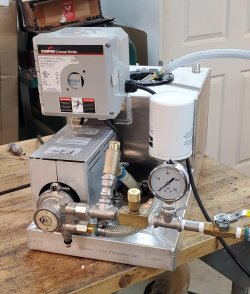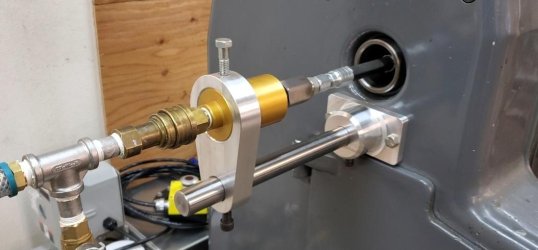WE own a GO 824 Lathe and currently looking to put a Flush" system on it. Right now, I do not mind chambering SLOW/ I am a perfectionist, so everything has to be done RIRGT. We don't have time schedules. We have Accuracy Schedules. When we are training a new young person that is interested in firearm building, we want to train to the best of our ability. so "Slow is Accurate and Accurate is Fast"
We are looking in the "Flush" System more for better cleaning than speed.
Anyone have experience and what model of Flush Systems do you use ?
Aso from the pump to the lines and do you use Vipers Venom? I know we have to get a stronger pump for Vipers Venom. so some suggestions. The thing I am looking at is the rotary attachment to the end of the barrel to pump the cutting fluid through to the Reamer. I don't want some Rinke Dink 90-degree attachment to the barrels that leaks all over.
I would rather spend all day with setup getting the barrel straight and my tooling set prefect and cutting the barrel the next day when I am fresh,
"It is not how fast you can chamber a barrel"
"It is how accurate you can cut that chamber."
We are looking in the "Flush" System more for better cleaning than speed.
Anyone have experience and what model of Flush Systems do you use ?
Aso from the pump to the lines and do you use Vipers Venom? I know we have to get a stronger pump for Vipers Venom. so some suggestions. The thing I am looking at is the rotary attachment to the end of the barrel to pump the cutting fluid through to the Reamer. I don't want some Rinke Dink 90-degree attachment to the barrels that leaks all over.
I would rather spend all day with setup getting the barrel straight and my tooling set prefect and cutting the barrel the next day when I am fresh,
"It is not how fast you can chamber a barrel"
"It is how accurate you can cut that chamber."


